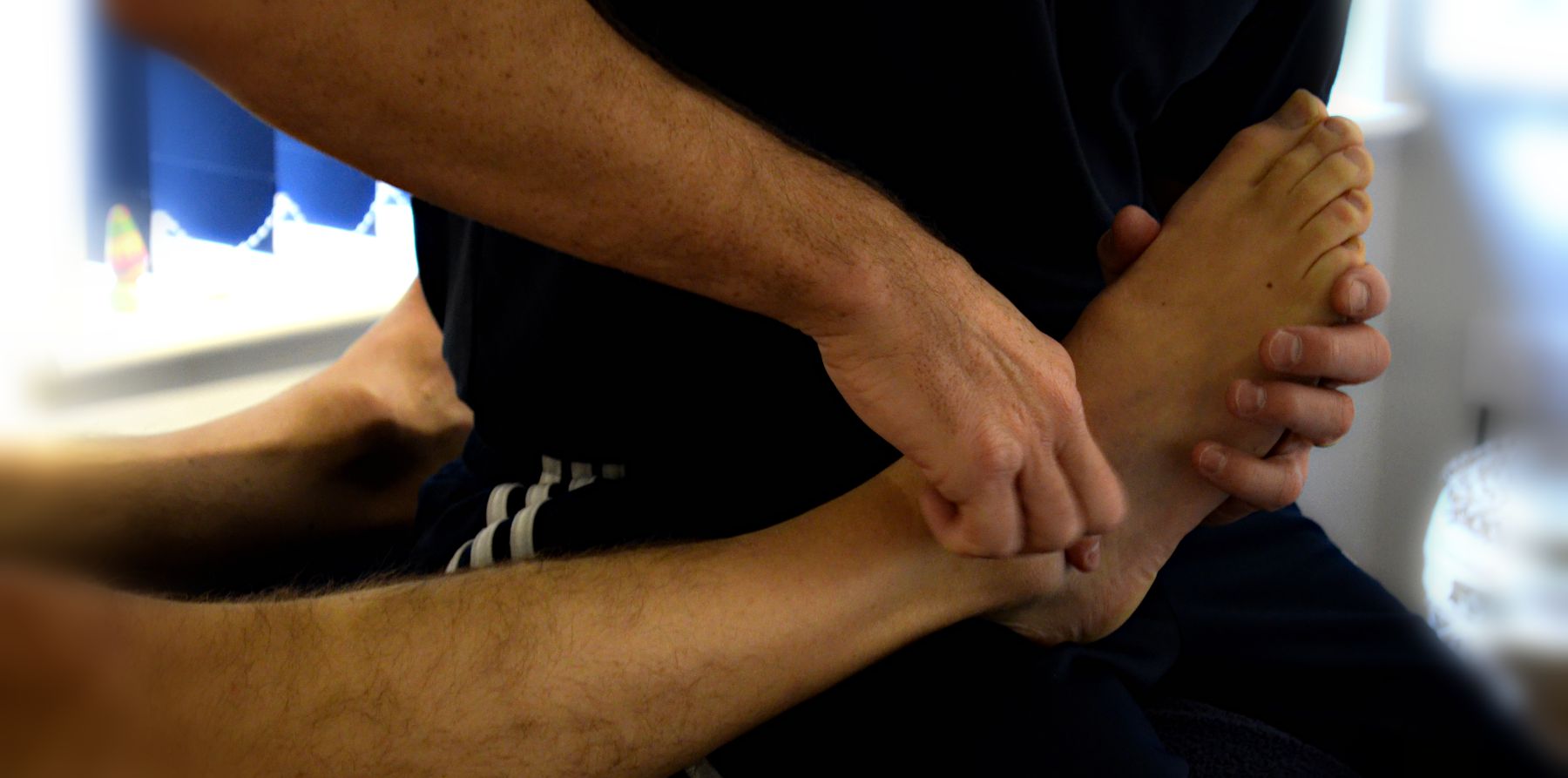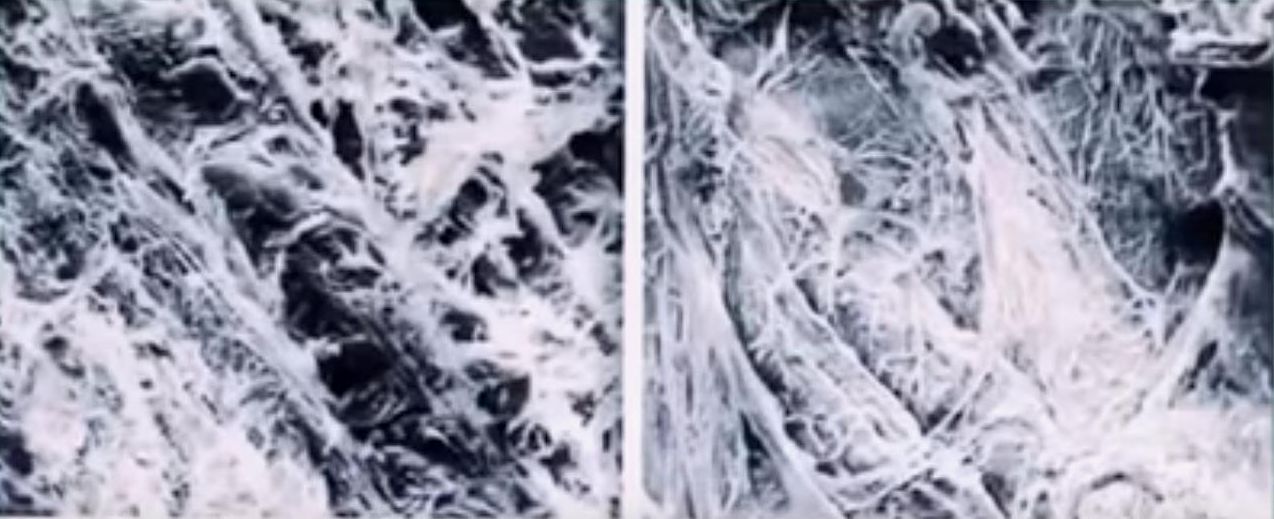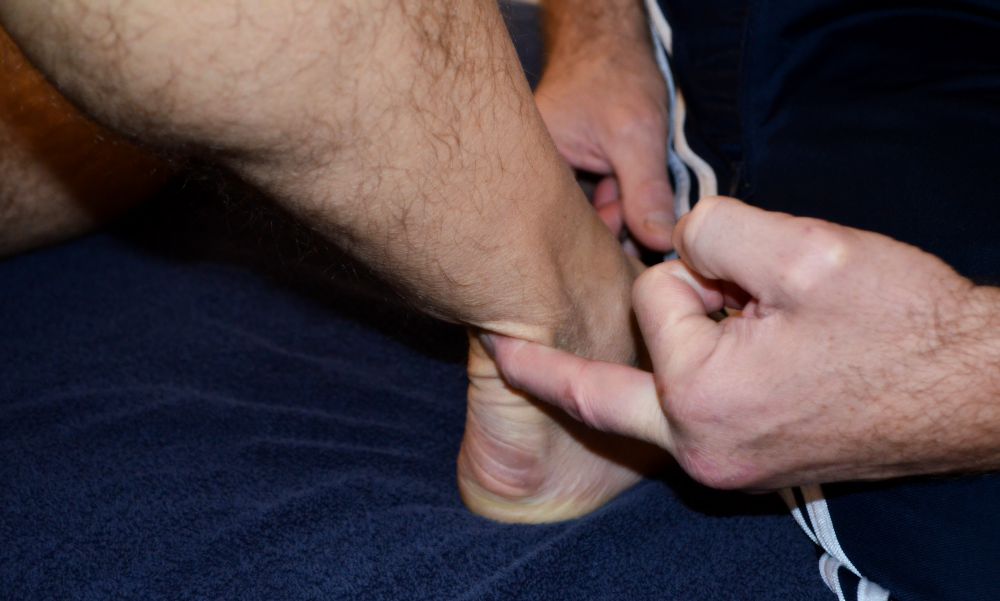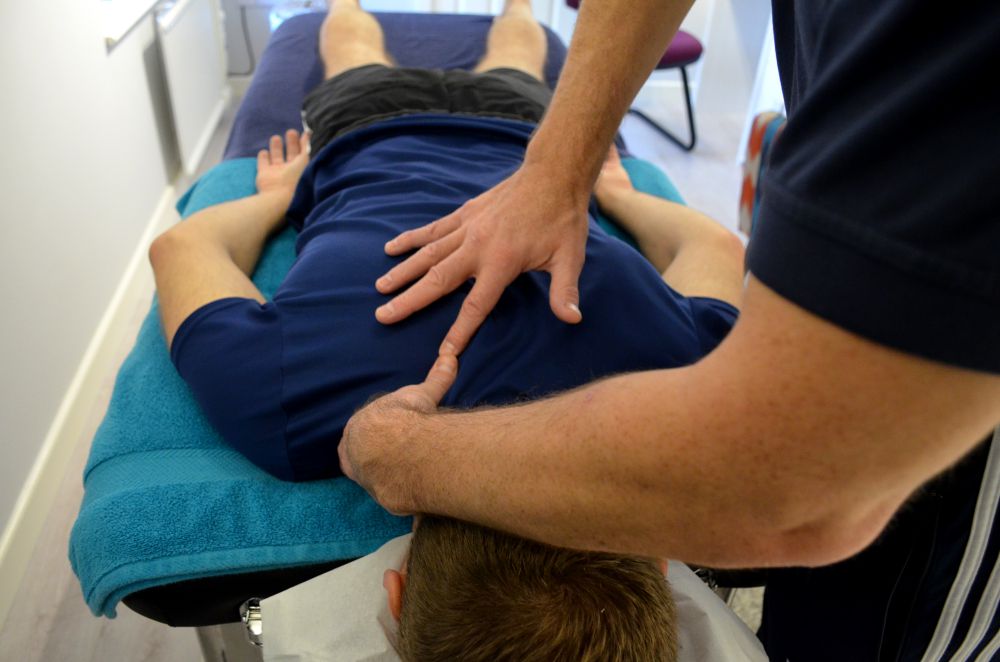
The Bowen Technique
The Bowen technique was developed by Australian Thomas Ambrose Bowen (1916–1982) and during his lifetime as a practitioner he was estimated to treat an average 13,000 patients a year. Since his death the application of the Bowen technique has spread globally and has been found to be highly effective in the treatment and management of many different ailments. With its popularity growing many people with whom the NHS have failed to treat or simply cannot do any more for with modern medicine are finding relief and a return to health with Bowen therapy.
How Bowen Works
The actual mechanism behind the success of Bowen is currently restricted to theory as it encompasses aspects and elements of the human body which are poorly understood and more research is needed in order to fully understand how the technique modifies the body. Below, however, is a brief synopsis of current theory relating to the manipulation of the fascia (connective tissue) and how Bowen works.

Figure shows fascia difference in a healthy arm (left) and an arm which has been in a cast for 6 weeks (right).
Fascia is the term for the connective tissue which forms a fibrous sheath around the muscles and organs within the body. The fascia interacts with many different components of the body including bones, nerves and blood vessels and seamlessly connects our entire body. It is the fascia that is the structure that gives us our structural integrity. The connective tissues which make up the fascia are made up of different collagen fibres and possess a great degree of sensory nerve endings, with the work of Dr Robert Schleip describing the fascia to possess approximately 6 times as many sensory nerves than its red muscular counterpart. With such a large component of sensory nerves, it would appear to indicate that the fascia is not just inert tissue but a complex sensory organ which connects to every organ and muscle within our body. Modification to the fascia through injury or emotional state could therefore drive localised or systemic changes within the body. Experiments with molecules produced during our body in response to stress have shown increased tension within the fibres of the fascia which could be the cause behind that “pent up” feeling and may also lead to injury and disease progression. Investigations into the fascia during injury have also shown it to change structure and density (see image) and damage to the fascia tissues within the lumbar region of the back have been linked to lower back pain. It is likely that the fascia plays a complex role as a sensory organ within the body and modification to it may be the cause and driver of many different ailments.
 The Bowen technique aims to make subtle adjusts to the fascia causing it to rearrange and allows the body to “re-balance” leading to changes which reduce pain and tension. As the fascia acts as a network for the transport of kinetic energy, the manipulation of the fascia could well be viewed as altering the regulation of energy within the body, with many Bowen application sites coincidently covering meridian lines.
The Bowen technique aims to make subtle adjusts to the fascia causing it to rearrange and allows the body to “re-balance” leading to changes which reduce pain and tension. As the fascia acts as a network for the transport of kinetic energy, the manipulation of the fascia could well be viewed as altering the regulation of energy within the body, with many Bowen application sites coincidently covering meridian lines.
The brain is our central processing unit, computing and processing huge amounts of sensory inputs such as touch, light, sound and movement every second. When the Bowen practitioner applies small gentle applications to stimulate certain areas it triggers the brain to ask questions and challenges the central nervous system to evaluate what just happened. The immediate response of this is generally the client enters into a deep state of relaxation. If we consider the fascia as a sensory organ which possesses a degree of innervation it could be that a degree of cross-talk is initiated between itself and the brain. This cross talk during a state of deep relaxation could be responsible for the initiation of the healing process and the key the success of the Bowen technique.
Steve is an incredibly studious practitioner, who leaves no stone unturned in his development. I have no doubt that he will continue to build a very successful business helping people in their various stages of health and recovery.
I wish him well and fully endorse his excellent work!
- Michael Morris, College of Bowen Studies teacher
I thank Steve for this amazing life-changing treatment he has provided me as mentally, at one stage, I couldn’t see me carrying on my physical job.
But now with his treatments, I can maintain my career that I am so passionate about and for that I am very grateful.
After only 4 weeks of treatment I cannot believe the difference it has made. I feel fabulous! From the first session I felt a massive difference and after struggling for years with pain in my leg and neck it is a huge relief to be able to move like I used to.
Steve made me feel very comfortable and was very gentle in his application of treatment. He made a full assessment at the start and end of each treatment and ensured that I felt fine before I left.
I am able to run better than I have done in a very long time. I feel healthier and more flexible. I cannot thank Steve enough. I feel fantastic.
After each session With Steve I feel more energised and less fatigued. I am sleeping better and living a normal life again because my fibromyalgia pain levels are at a more manageable level.
- Mavis, aged 74
The results achieved from a simple treatment have change the way I live my life. I now have more energy and I no longer feel like I simply just can’t do tasks because I am exhausted from M.E. I have taken up swimming after work and I actually do things on weekends, something I could not have imagined a few short months ago.
- Roger, age 52
Steve has put tremendous effort into helping me manage my condition of Psoriatic Arthritis, not only delivering the Bowen treatment but offering counselling on managing my disorder. Together we have worked on changing my lifestyle which, combined with the treatments, has helped to significantly reduce the pain and discomfort in my joints.
- Chris, age 30
Bowen Therapy has completely changed my life. I was very sceptical at first but now I swear by it. Before I used to struggle with just doing the housework but now I go out walking with my husband every weekend. I feel as though I’m almost back to normal, and maybe with more sessions I will be. Fingers crossed!
- Nancy, age 48
My condition was completely ruling and ruining my life. I was getting migraines at least twice a week and was in bed more than I was awake, it was putting pressure on my marriage. After Bowen therapy I feel like I’m back from the brink, so to speak. For the last two months I have not had a single headache let alone migraine, and I’m back to normal, actually staying up to watch TV and also going out. Thanks Steve.
- Abdul, age 32
I see Steve on a monthly basis, his treatment helps to reduce the symptoms of rheumatoid arthritis. Highly recommended, I have my life back!
- Dawn, age 42
The Functional Healing clinic has helped me to regain my life back. The Bowen treatment given there has helped to give me more energy and has got rid of lots of my pain. The man, Steve, he helps not only with giving the treatment but also talks to you and offers ways to help with your condition.
- Sheena, age 40
I use Bowen therapy to help me gain a small respite from issues with stiffness and tremors. Bowen is by no means a cure for Parkinson’s, but the short-term relief from each treatment I feel is worth its weight in gold.
- Graham, age 53
Before seeing Steve at Functional Healing, I had regular physio which offered little relief. So far, I have had five Bowen sessions and I have gone from being paralysed on my left side (from a stroke) to being able to lift my arm almost above my head!
- Cynthia, age 55
Due to a car accident I suffer with numbness in my feet and shooting pains in my right hand. I see Steve at Functional Healing for regular Bowen treatments because they offer a welcome respite. Usually after each session my hand feels back to normal and my feet are significantly improved. Thanks to Steve I can still work – and play on my XBox!
- Callum, age 25

